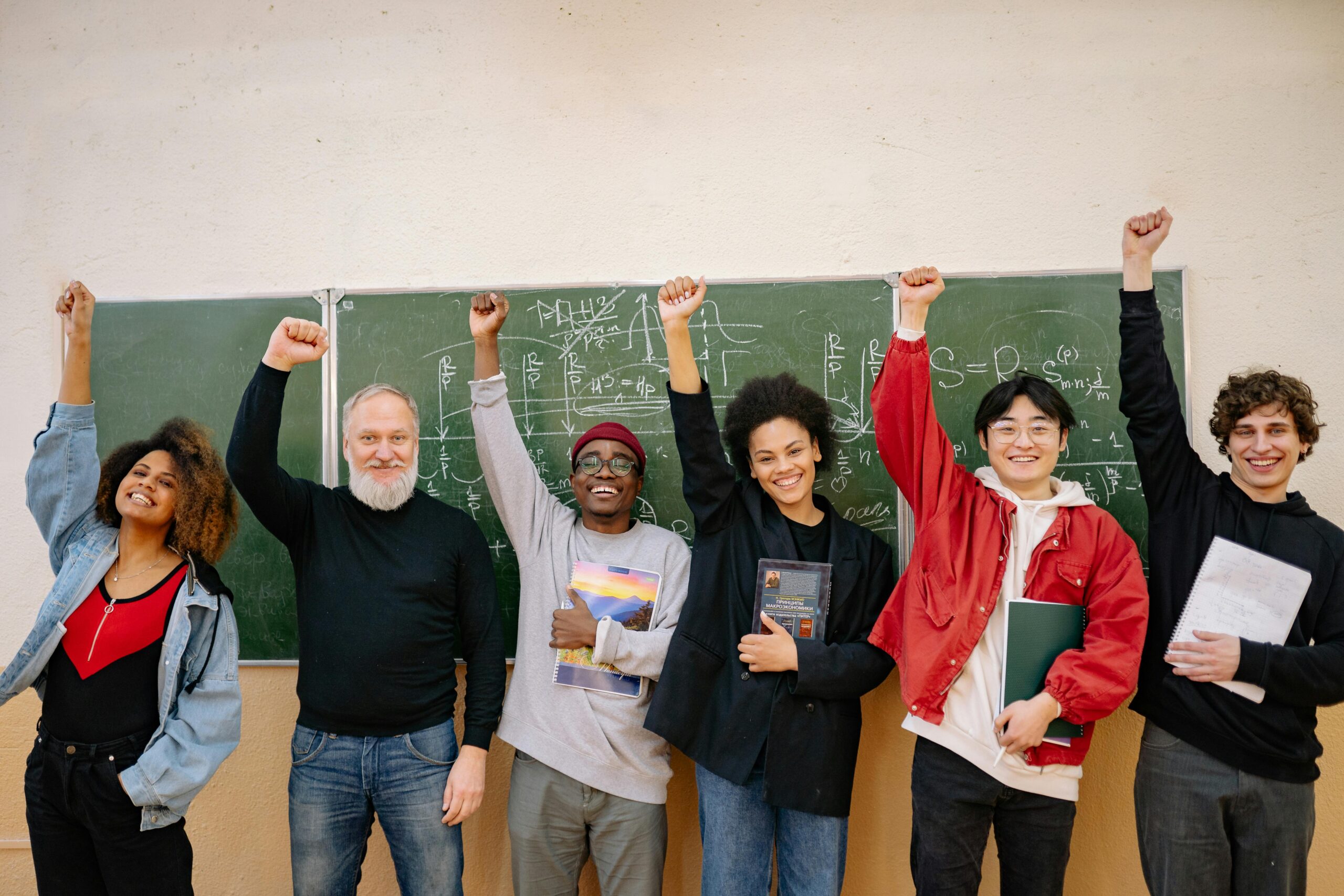Technology is reshaping the educational landscape, creating unprecedented opportunities for teachers to enhance learning experiences and better connect with students in meaningful, innovative ways.
🚀 The Dawn of a New Educational Era
The modern classroom has evolved far beyond chalkboards and textbooks. Today’s educational environments are dynamic spaces where digital tools, interactive platforms, and innovative technologies converge to create rich, engaging learning experiences. Teachers stand at the forefront of this transformation, navigating the intersection of traditional pedagogy and cutting-edge innovation.
This digital revolution isn’t just about adding gadgets to classrooms—it’s about fundamentally reimagining how we approach teaching and learning. Educators who embrace these changes find themselves empowered with tools that can personalize instruction, streamline administrative tasks, and reach students in ways previously unimaginable.
Understanding the Tech-Driven Classroom Landscape
The tech-driven classroom represents a holistic ecosystem where various digital elements work together to support educational goals. From learning management systems to interactive whiteboards, from educational apps to virtual reality experiences, technology has become woven into the fabric of daily instruction.
However, the mere presence of technology doesn’t guarantee success. What truly matters is how teachers integrate these tools into their pedagogical approaches, ensuring that technology serves learning objectives rather than becoming a distraction or an end in itself.
Essential Components of Modern Educational Technology
Understanding the core elements of tech-driven classrooms helps teachers make informed decisions about which tools to adopt and how to use them effectively. The landscape includes several key categories:
- Learning Management Systems (LMS): Platforms like Google Classroom and Canvas that centralize course materials, assignments, and communication
- Interactive Presentation Tools: Software that transforms static lectures into engaging, participatory experiences
- Assessment and Analytics Platforms: Systems that provide real-time data on student progress and understanding
- Collaboration Tools: Applications enabling seamless teamwork and communication between students and teachers
- Content Creation Software: Programs empowering both teachers and students to produce multimedia learning materials
💪 Empowering Teachers Through Professional Development
The key to thriving in tech-driven classrooms isn’t just access to technology—it’s comprehensive, ongoing professional development that builds teacher confidence and competence. Educators need more than one-time training sessions; they require sustained support that evolves with technological advances.
Effective professional development programs recognize that teachers have varying levels of technological proficiency. A one-size-fits-all approach rarely succeeds. Instead, differentiated learning opportunities allow educators to progress at their own pace while receiving support tailored to their specific needs and contexts.
Building a Growth Mindset Around Technology
Many teachers initially feel overwhelmed by the rapid pace of technological change. Cultivating a growth mindset—the belief that skills can be developed through dedication and effort—becomes crucial for long-term success in tech-integrated teaching.
This mindset shift involves reframing challenges as learning opportunities rather than insurmountable obstacles. When teachers view themselves as continuous learners alongside their students, they create classroom cultures that celebrate experimentation, iteration, and resilience.
📱 Practical Strategies for Technology Integration
Successful technology integration requires thoughtful planning and strategic implementation. Teachers who thrive in tech-driven classrooms follow several proven approaches that maximize benefits while minimizing disruption to learning.
The SAMR Model: A Framework for Meaningful Integration
The SAMR model provides a useful framework for understanding different levels of technology integration, from basic substitution to complete transformation of learning experiences. This model helps teachers progressively deepen their technology use:
- Substitution: Technology acts as a direct tool substitute with no functional change (typing instead of handwriting)
- Augmentation: Technology substitutes with functional improvement (using word processing features like spell-check and formatting)
- Modification: Technology allows for significant task redesign (collaborative writing with real-time editing and commenting)
- Redefinition: Technology enables creation of new tasks previously inconceivable (creating multimedia presentations with embedded interactive elements)
Starting Small and Scaling Up
Teachers shouldn’t attempt to overhaul their entire teaching practice overnight. Instead, starting with one or two manageable technology integrations allows for experimentation, reflection, and refinement before expanding further.
This incremental approach reduces stress, builds confidence, and creates space for meaningful learning about what works best in specific classroom contexts. As comfort grows, teachers naturally expand their technological toolkit and deepen their integration strategies.
🎯 Addressing Common Challenges and Obstacles
Despite the tremendous potential of educational technology, teachers face real challenges that can impede successful implementation. Acknowledging these obstacles and developing strategies to overcome them is essential for sustainable progress.
Technical Issues and Infrastructure Limitations
Unreliable internet connections, outdated devices, and insufficient technical support can frustrate even the most enthusiastic technology adopters. Teachers need contingency plans for when technology fails and advocacy strategies for securing necessary resources.
Building relationships with IT support staff, creating offline alternatives for digital activities, and documenting technology needs for administrators helps mitigate these infrastructure challenges.
Time Constraints and Workload Management
Learning new technologies and redesigning lessons to incorporate digital tools requires significant time investment. Teachers already working at capacity may struggle to find time for this additional professional learning.
Schools can support teachers by providing dedicated planning time, reducing other obligations during implementation periods, and recognizing that effective technology integration is a gradual process requiring patience and sustained effort.
✨ Personalized Learning Through Technology
One of technology’s most powerful contributions to education is its capacity to support personalized learning experiences tailored to individual student needs, interests, and learning paces. This personalization represents a significant departure from traditional one-size-fits-all instruction.
Adaptive learning platforms use algorithms to adjust difficulty levels based on student performance, providing appropriately challenging content that keeps learners in their optimal growth zone. Meanwhile, learning analytics help teachers identify students who need additional support or enrichment.
Data-Informed Instruction
Technology provides teachers with unprecedented access to data about student learning. Digital assessments, learning management systems, and educational apps generate rich information about student progress, engagement patterns, and areas of difficulty.
However, data only becomes valuable when teachers have the time, tools, and training to interpret it meaningfully and translate insights into instructional adjustments. Professional development should include data literacy skills alongside technical competencies.
🌟 Fostering Student Engagement and Collaboration
Technology opens new pathways for student engagement, offering interactive, multimedia-rich experiences that can capture attention and sustain interest. Digital tools also facilitate collaboration that extends beyond physical classroom walls.
Video conferencing tools enable connections with experts, partner classrooms around the world, and students unable to attend in person. Collaborative documents allow simultaneous editing and peer feedback. Discussion forums create space for thoughtful written dialogue that complements verbal classroom discussions.
Balancing Screen Time and Offline Activities
While technology offers tremendous benefits, thoughtful educators recognize the importance of balance. Not every learning objective requires a digital solution, and excessive screen time can lead to fatigue and disengagement.
The most effective tech-driven classrooms strategically blend digital and analog experiences, using technology purposefully when it genuinely enhances learning while preserving valuable hands-on, interpersonal, and reflective activities that don’t require screens.
🔐 Digital Citizenship and Safety
As classrooms become increasingly connected, teachers must explicitly teach digital citizenship skills that prepare students to navigate online spaces responsibly, ethically, and safely. This education extends beyond technical skills to encompass critical thinking about digital media and online behavior.
Topics include privacy protection, identifying credible sources, understanding digital footprints, practicing respectful online communication, and recognizing cyberbullying. Teachers model these competencies through their own digital practices and create classroom cultures that prioritize responsible technology use.
🤝 Building Support Networks and Learning Communities
No teacher should navigate educational technology alone. Professional learning networks, both within schools and online, provide essential support, inspiration, and practical resources for teachers embracing technology integration.
Social media platforms host vibrant education communities where teachers share strategies, troubleshoot challenges, and celebrate successes. Local and virtual professional learning communities create spaces for sustained collaboration and mutual support.
Leveraging Peer Expertise
Every school building contains teachers with varying technology strengths. Creating structures that facilitate peer learning—like tech mentorship programs, demonstration lessons, or collaborative planning time—helps spread expertise organically throughout the school.
This approach respects teacher professionalism while building collective capacity. It also normalizes ongoing learning and positions all teachers as both learners and experts in different domains.
🎓 Measuring Success in Tech-Driven Classrooms
Determining whether technology integration succeeds requires looking beyond surface-level metrics like number of devices or hours of use. Meaningful evaluation focuses on impacts on teaching practice and student learning outcomes.
Effective assessment considers multiple dimensions: Are students more engaged? Is instruction more personalized? Do learning experiences reflect higher levels of the SAMR model? Are students developing digital literacy skills alongside content knowledge? Can teachers articulate how technology serves their pedagogical goals?
| Success Indicator | What to Look For |
|---|---|
| Student Engagement | Active participation, sustained attention, student-initiated technology use |
| Personalization | Differentiated content, individualized pacing, student choice in learning paths |
| Collaboration | Peer-to-peer interaction, collective knowledge building, shared creation |
| Critical Thinking | Analysis of digital sources, creative problem-solving, meaningful application |
| Teacher Confidence | Willingness to experiment, problem-solving autonomy, pedagogical intentionality |
🌈 Creating an Inclusive Tech-Driven Classroom
Technology has tremendous potential to support diverse learners, but only when implemented with intentional attention to accessibility and equity. Teachers must ensure that digital tools expand rather than limit educational opportunities.
This includes selecting platforms with built-in accessibility features, providing alternatives for students with limited home internet access, choosing content that represents diverse perspectives and experiences, and being mindful of how socioeconomic differences might affect technology access and comfort.
Universal Design for Learning
The Universal Design for Learning framework provides valuable guidance for creating inclusive tech-driven classrooms. This approach emphasizes providing multiple means of representation, expression, and engagement—goals that technology can uniquely support through its flexibility and adaptability.
Digital texts can be adjusted for readability, audio supports can assist struggling readers, and varied output options allow students to demonstrate learning through their preferred modalities.

💡 The Future of Teaching in Technology-Rich Environments
As technology continues evolving at an accelerating pace, the specific tools and platforms we use today will inevitably change. However, the fundamental principles of effective teaching remain constant: knowing students well, designing meaningful learning experiences, providing appropriate support and challenge, and nurturing curiosity and growth.
Teachers who thrive in tech-driven classrooms maintain this pedagogical core while remaining open to how emerging technologies might enhance their practice. They approach new tools with both enthusiasm and critical discernment, always asking how technology serves learning rather than adopting innovations simply because they’re new.
The future belongs to educators who view themselves as adaptive professionals, continuously learning and evolving alongside their students. These teachers don’t fear technology; they harness it purposefully to create richer, more equitable, more engaging educational experiences that prepare students for a rapidly changing world.
By investing in comprehensive teacher support, prioritizing meaningful integration over superficial adoption, building collaborative professional communities, and maintaining focus on core pedagogical principles, we can truly revolutionize education in ways that empower both teachers and students to thrive.
Toni Santos is an education futurist and learning design researcher dedicated to reimagining how people build skills in a fast-changing world. With a focus on cognitive tools, EdTech innovation, and equitable access, Toni explores systems that help learners think deeper, adapt faster, and learn for life. Fascinated by the science of learning and the power of technology to personalize growth, Toni’s journey bridges classrooms, startups, and global initiatives. Each project he shares is an invitation to transform education into a continuous, human-centered experience—where curiosity, practice, and purpose align. Blending learning science, product design, and policy insight, Toni studies models that turn knowledge into capability at scale. His work highlights how thoughtful design and inclusive technology can unlock talent everywhere—across ages, cultures, and contexts. His work is a tribute to: Cognitive learning tools that make thinking visible and transferable EdTech innovation that expands access and personalizes pathways Lifelong learning systems that support relevance, resilience, and purpose Whether you’re building a learning product, shaping policy, or growing your own skills, Toni Santos invites you to design learning for tomorrow—one insight, one practice, one empowering pathway at a time.




